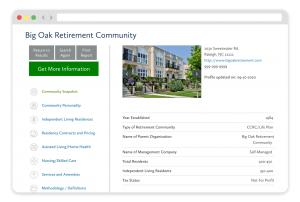We cite the statistic often: nearly 90 percent of seniors want to “age in place,” i.e., stay in their own home, according to AARP’s research. While this set-up sounds idyllic in theory, the realities of staying in your house as you age could ultimately present myriad problems related to lifestyle, health, and safety, both for the senior and for their caregiver(s).
The continuing care retirement community (CCRC, also known as a life plan community) falls at the opposite end of the senior housing spectrum. Retirement communities that offer various amenities and progressive levels of assistance, as well as on-site healthcare facilities, CCRCs are a wonderful solution for some retirees, while others find them too restrictive or expensive, or simply have an aversion to living in an “old folk’s home.”
A CCRC…in your own home
That’s where the “continuing care at home” model comes into play (sometimes referred to as “CCRCs without walls”). Merging the comfort and security of staying in the home with the assistance and healthcare of a CCRC, the continuing care at home concept may just be a best-of-both-worlds solution for many seniors.
In essence, with this set-up, the requirement to buy-in or rent a residence on the CCRC’s physical campus is eliminated. The CCRC’s caregivers (physical therapists, aides, nurses, etc.) are instead dispatched to the senior’s own home. CCRCs that have implemented continuing care at home programs have effectively extended the reach of their services far beyond the walls of their facility.
How continuing care at home works
Similar to a standard CCRC contract, a continuing care at home agreement includes a one-time upfront entrance fee as well as a monthly care service fee, but the total expense is lower than moving to the CCRC’s facility (especially for those who own their own home outright). Depending on the terms of the contract, as a “member” of the CCRC, select services are then available to you in the comfort of your own home.
>>Related: The Cost of Assisted Living- What You Need to Know
A few of the typical service offerings provided by a continuing care at home contract may include:
- Annual physicals and wellness programs
- Transportation
- Care coordination
- Home inspections
- Companion or live-in care
- Home care or home health care
- An emergency response system
- Adult day care
- Meals
- Assisted living and nursing home care
Many continuing care at home contracts will even offer members access to activities and amenities at the CCRC (such as classes, outings, or the swimming pool).
A plan for the future
Here’s the really nice thing about the continuing care at home model. Down the road, should you decide to move into a residence at the CCRC, you will be granted priority over non-members, and you will continue to pay the same monthly care services fee for healthcare and/or assistance with activities of daily living (ADL).
A hybrid senior care solution
If you are one of the majority of seniors who would like to stay in your home for as long as possible, but still would like the security of knowing you have access to assistance and healthcare services as you age, the continuing care at-home model may be an ideal option. Find the CCRCs in your area and contact them to learn if they offer continuing care at home contracts.

FREE Detailed Profile Reports on CCRCs/Life Plan Communities
Search Communities





